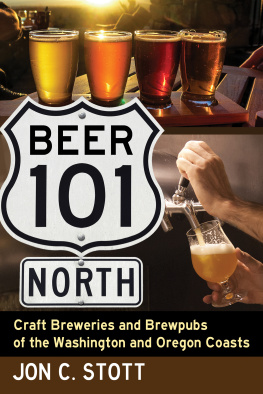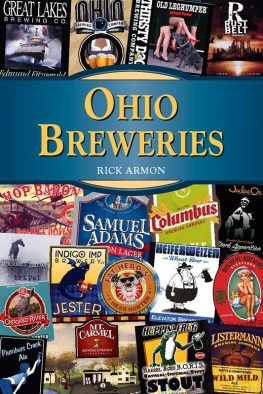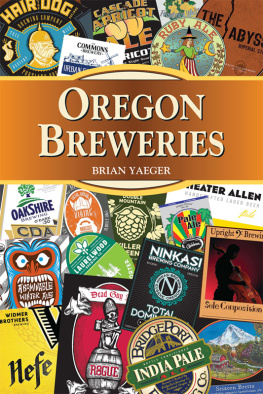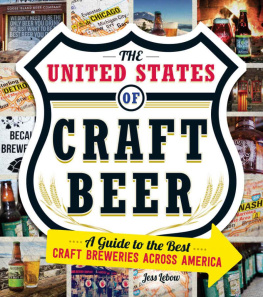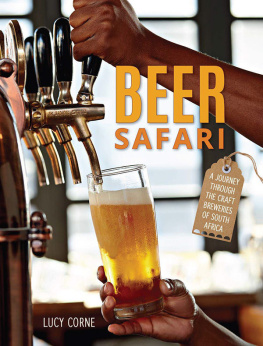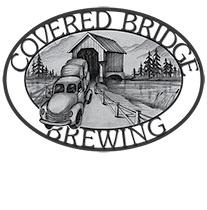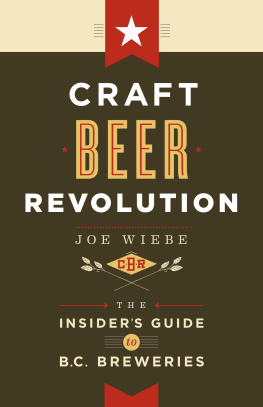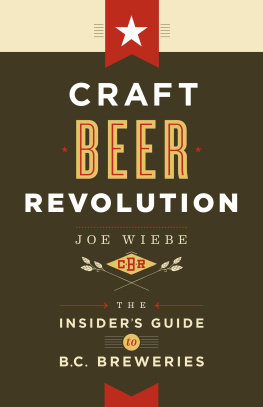
Also by JON C. STOTT
AND FROM MCFARLAND
Minor Leagues, Major Boom: Local Professional Baseball Revitalized (2004)
Leagues of Their Own: Independent Professional Baseball, 19932000 (2001)
Beer 101 North
Craft Breweries and Brewpubs of the Washington and Oregon Coasts
JON C. STOTT

McFarland & Company, Inc., Publishers
Jefferson, North Carolina
LIBRARY OF CONGRESS CATALOGUING DATA ARE AVAILABLE
BRITISH LIBRARY CATALOGUING DATA ARE AVAILABLE
e-ISBN: 978-1-4766-2945-2
2017 Jon C. Stott. All rights reserved
No part of this book may be reproduced or transmitted in any form or by any means, electronic or mechanical, including photocopying or recording, or by any information storage and retrieval system, without permission in writing from the publisher.
Front cover photographs 2017 iStock
McFarland & Company, Inc., Publishers
Box 611, Jefferson, North Carolina 28640
www.mcfarlandpub.com
To my daughter Clare,
in gratitude for all her support
Acknowledgments
Although this book bears my name on the cover, it could not have been written without the assistance of many people. I am grateful to all the brewery and brewpub owners and brewers who graciously took time to share their stories and their beer. To the writers of the many fine beer books and magazine articles which I consulted during my research and writing, thank you. Finally, to my daughter Clare, thank you as usual for your support and for helping me with the tasting notes for many of the beers we sampled.
Preface
Since 2010, the number of craft breweries and brewpubs operating in the United States has increased enormously. According to the Brewers Association, 4,656 were doing business in the middle of 2016. Washington and Oregon, two states that have been leaders in the modern craft beer movement that began in the early 1980s, have seen the numbers of breweries and brewpubs increase, from 2011 to 2015, by 105 percent. Much of this growth has taken place in the large metropolitan areas of Portland and Seattle and in such fairly large cities as Eugene and Salem, Oregon, and Spokane and Tacoma, Washington. What is surprising, however, is the fact that so many breweries and brewpubs have opened in villages, towns, and smaller cities.
Such is the case along U.S. Highway 101, from Tumwater, Washington, to Harbor, Oregon, just north of the California border. At the beginning of 2016, twenty-one villages, towns, and small cities, ranging in population from 690 (Yachats, Oregon) to 46,478 (Olympia, Washington), hosted 36 breweries and brewpubs.
Beer 101 North is an examination of the craft breweries and brewpubs along Highway 101 in Washington and Oregon and presents the back stories of the breweries, explores the relationships between these breweries and the communities in which they operate, profiles owners and brewers, and offers tasting notes about many of the beers each place offers. The book provides an in-depth examination of breweries and brewpubs of a specific area that both reflect the area in which they are located and serve as examples of some of the current trends in craft brewing. The Introduction gives a summary of trends in American brewing during the twentieth century and an overview of the craft beer movement since the early 1980s, with particular emphasis on Washington and Oregon. Parts I, II, III, and IV are a narrative of what might be called a beer lovers odyssey I made early in 2016 along Highway 101 from Thurston County, Washington, to the Oregon-California border. In the Conclusion, I offer hypotheses about why nearly all of the breweries and brewpubs I stopped at have been so successful, even those operating in very small towns, and I consider the future of the craft brewing boom along Washington and Oregons Wet Coast.
Appendices provide information for visitors who might wish to include in their itineraries stops at the breweries along Highway 101 in Oregon and Washington. Appendix A, A Directory of Breweries, includes basic facts (addresses, phone numbers, web sites, names of owners and brewers), details about the brewing operations (brewhouse sizes, annual production, regularly brewed beers, Great American Beer Festival awards), information about food service, policies on admitting children and dogs, and handicapped accessibility. There are also notes about special events each brewery hosts as well as its involvement in community and charitable activities.
Appendix B, A Guide to Beer Styles, gives brief descriptions of several dozen styles of craft beer, along with examples of each style from the breweries I visited. Appendix C is a glossary of beer and brewing terms, while Appendix D, From Grain to Glass, is an essay dealing with the basic ingredients of beers, the brewing process, and the packaging and drinking of beer.
While the technical terms found in this book are defined in the glossary, the meanings of six of the most frequently used are given here:
ales: one of the two major categories of beers, ales are brewed at relatively warm temperatures using top fermenting yeast and are generally darker in color, more full-bodied, and more robust in flavor than lagers. Examples include India pale ale, Porter and Stout.
lagers: the other major category, lagers are brewed at very cool temperatures using bottom fermenting yeast and are generally lighter in color, lighter-bodied and more delicate in flavor. Examples include the Pale American Lagers produced by the megabrewers, Pilsners, Helles, and Vienna Lagers. Bocks are darker, heavier styles of lager.
ABV: alcohol by volume, expressed as a percentage, which ranges from around 4 percent to over 10 percent. When available, the ABV of a specific beer is included in the text.
IBUs: International Bitterness Units, which indicate the bitterness, created by the hops, of the beer. The IBUs of lighter lagers may be around 15, while those of some IPAs can reach or even exceed 100. When available, the IBUs in a specific beer are included in the text.
Barrel: a standard unit for measuring beer by volume. A barrel is 31 U.S. gallonsthats just over 330 12-ounce cans or bottles of beer.
GABF: Acronym for the annual Great American Beer Festival, at which gold, silver, and bronze medals are awarded for the best beers in nearly 100 style categories.
One final note: Brewing is a fluid industry. Breweries open, close, or move. Owners and brewers change; certain styles are dropped and others added; taproom hours and services can be altered. If youre planning on including visits to the breweries along Oregon and Washingtons Highway 101, be sure to check brewery websites and/or Chambers of Commerce before you go.
Introduction
In December 2015, while doing preliminary research for my beer travels along Highway 101, I came across two press releases, the contents of which provided insights into the recent history, contemporary status and future directions of the American brewing industry. On December 2, 2015, the Brewers Association, the organization representing the craft beer industry, announced that there were now more operating breweries in the United States than ever before. It was the fourth smaller American craft brewery that St. Louis based behemoth had purchased in 2015.
In 1873, brewing in America was a local industry. Beer did not travel well; most beer was consumed at or purchased for home consumption from a nearby brewery. It was not until the development of refrigeration, extended railway systems, and later, highway systems, that beer production became increasingly regional. After World War II, most local breweries disappeared and such regional companies as Miller, Schlitz, Coors, Stroh Brewery Company, Olympia, and Anheuser-Busch strove to become national brewers, their products available in all states. By the end of the twentieth century, Miller, Coors, and Anheuser-Busch achieved their goals. Most of the other regionals had either disappeared or had their brands purchased by Pabst, which had become a holding company that had such beers as Rainier, Olympia, Lone Star, and Strohs contract brewed at, ironically, Miller plants and sold in the nostalgia market.
Next page
